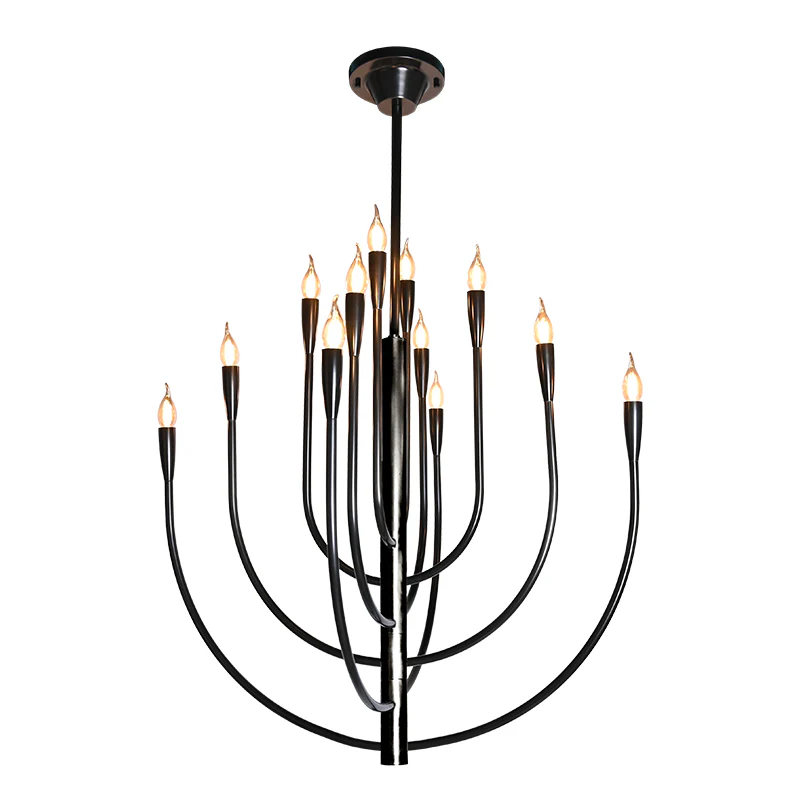Maximizing Your Space: Layered Ceiling Light Strategies for Every Room
Maximizing Your Space: Layered Ceiling Light Strategies for Every Room
Lighting plays a crucial role in our living spaces, not only in terms of functionality but also in creating the right ambiance. When it comes to optimizing lighting in different rooms, employing layered Ceiling Light strategies can transform your environment from dull to dynamic. This article will explore various techniques, placements, and considerations for achieving the perfect layered lighting in your home.
Understanding Layered Lighting
Layered lighting refers to the combination of ambient, task, and accent lighting to create a well-lit, versatile space. Each type of lighting serves a distinct purpose:
- Ambient Lighting: This is the primary source of light that fills a room, providing general illumination.
- Task Lighting: Focuses on specific areas for activities such as reading, cooking, or working.
- Accent Lighting: Highlights artwork, architectural features, or landscaping to add visual interest.
The Importance of Layered Ceiling Light Strategies
Implementing layered Ceiling Light strategies can significantly improve both the form and function of your space. Here are a few reasons why:
- Enhanced Aesthetics: Layered lighting adds depth and dimension to the room, making it more visually appealing.
- Improved Functionality: Different lighting types cater to various needs, allowing for better task performance.
- Flexibility: By using dimmers and multiple light sources, you can adapt the ambiance to fit different occasions.
Key Strategies for Layered Ceiling Lighting
Now that you understand the concept of layered lighting, let's delve into effective strategies for implementation:
1. Choose the Right Fixtures
It’s essential to select fixtures that complement the room's style while providing adequate lighting. Consider different types of Ceiling Lights:
- chandeliers: Ideal for dining rooms or entryways, chandeliers add elegance and functionality.
- Pendant Lights: Great for kitchens or breakfast nooks, these fixtures provide focused task lighting.
- Flush-Mount or semi-flush Mount Lights: Suitable for low ceilings, they provide ambient lighting without overpowering the space.

2. Layer Strategically
Combining different layers of light can dramatically affect your room. Here’s a suggested layout:
| Lighting Type | Purpose | Suggested Placement |
| Ambient Lighting | General illumination | Throughout the room, centrally placed |
| Task Lighting | Specific activities | Near workspaces (e.g., kitchen islands, desks) |
| Accent Lighting | Highlight features | Near artwork or architectural elements |
3. Utilize Dimmers and Controls
Using dimmer switches allows for control over the intensity of light, providing flexibility and enhancing mood. Smart lighting systems can also automate lighting based on time or occupancy.
4. Consider Color Temperature
Lighting color temperature can greatly influence the atmosphere of a room. Warmer tones (2700K-3000K) create a cozy environment, while cooler tones (3500K-4100K) promote a more energetic and focused space. Mixing various color temperatures can achieve a balanced effect.
5. Focus on Room-Specific Needs
Different rooms have unique lighting requirements. Here are some tailored strategies:
Living Room:
Combine a ceiling-mounted fixture with Floor lamps and Table lamps for a cozy yet functional setting.
Kitchen:
Incorporate under-cabinet lights, pendant lights above islands, and bright recessed lighting to ensure a well-illuminated workspace.
Bedroom:
Use dimmable Ceiling Lights combined with bedside lamps to create a serene sleeping environment, facilitating relaxation.
Bathroom:
Pendant lights or sconces on either side of the Mirror provide excellent task lighting for grooming activities.
6. Maintain Balance and Proportion
When planning your lighting, consider the scale and balance of your fixtures in relation to the room size. Oversized fixtures might overwhelm a small space, while small lights may get lost in a large room. Always aim for a harmonious look.
Additional Considerations for Layered Ceiling Lighting
It's important to consider a few more factors when implementing your lighting strategy:
- Energy Efficiency: Opt for LED bulbs to reduce energy consumption and cost over time.
- Placement Height: Ensure fixtures are hung at appropriate heights to avoid glare and maximize effectiveness.
- Maintenance: Choose easy-to-clean fixtures that maintain their aesthetic appeal over time.
Frequently Asked Questions
1. How many layers of lighting should I include in a room?
It is recommended to include at least three layers of lighting to create a balanced and functional environment.
2. Can I mix different styles of fixtures?
Yes, mixing styles can be effective, but aim to keep a cohesive theme to prevent clashing.
3. What’s the best way to arrange lights in an open concept space?
In open spaces, consider zones for each area, using different lighting strategies for functions like dining, cooking, and lounging.
Conclusion: Embrace Layered Ceiling Light Strategies
Implementing effective layered Ceiling Light strategies can elevate your home’s ambiance, functionality, and overall Aesthetics. By combining different types of lighting and considering the unique needs of each room, you can create a harmonious and inviting environment. Remember to choose fixtures that complement your design while ensuring energy efficiency and flexibility. With thoughtful planning, light can transform your spaces, making them not only more beautiful but also more livable.
As you embark on optimizing your home lighting, consider the importance of maintaining balance and being mindful of how each layer complements the others. Enjoy the creative process and embrace the transformative power of light in your home!
